This article was co-authored by Liana Georgoulis, PsyD. Dr. Liana Georgoulis is a Licensed Clinical Psychologist with over 10 years of experience, and is now the Clinical Director at Coast Psychological Services in Los Angeles, California. She received her Doctor of Psychology from Pepperdine University in 2009. Her practice provides cognitive behavioral therapy and other evidence-based therapies for adolescents, adults, and couples.
There are 11 references cited in this article, which can be found at the bottom of the page.
wikiHow marks an article as reader-approved once it receives enough positive feedback. This article received 11 testimonials and 84% of readers who voted found it helpful, earning it our reader-approved status.
This article has been viewed 268,275 times.
Effexor and Effexor XR are the brand names in the United States for Venlafaxine, an antidepressant pill that is used to treat millions of people. Effexor is prescribed by doctors to treat depression, anxiety disorders, as well as panic disorder.[1] Because Effexor is prescribed, it is important to follow your doctor’s instructions for taking it. This includes the time you and your doctor decide it is best to stop taking the drug. By gradually tapering your doses and relieving any withdrawal symptoms you may have, you can stop taking Effexor.
Steps
Tapering Your Doses
-
1See your doctor. It's always important to talk to your doctor before withdrawing yourself from a substance or medication.[2] No matter what you do, you should consult your doctor if you feel you should stop taking Effexor. While you might feel better or even need to discontinue the pills because of pregnancy or another condition, going off Effexor cold turkey can have serious consequences. Talking to your doctor can help you make an informed decision about alternative treatments or quitting Effexor altogether.[3]
- Avoid stopping or tapering off Effexor until you speak to your doctor. Continue to follow the instructions your doctor gave you when he or she prescribed the medication.
- Tell your doctor the reasons why you want stop Effexor. Make sure you are completely honest about your reasons so that your doctor can consider the best treatment options for you. You may have a wide variety of reasons why you want to go off Effexor from feeling better to pregnancy or breastfeeding and other drug interactions.[4]
- Make sure to listen to your doctor’s suggestions. Ask questions if you have them, including the benefits and risks to stopping the drug as well as if there are alternatives to the doctor’s suggestions.
- You can always get a second medical opinion if need be.
-
2Give yourself time. No matter how long you’ve been taking Effexor, give yourself plenty of time to stop the drug. Although it’s tempting to just stop altogether, this can cause difficult and uncomfortable withdrawal symptoms and may make you feel worse. Depending on your dosage, you’ll need to give yourself anywhere from one week to several months to stop taking Effexor. Based on your condition and dosage, your doctor can help you formulate a rough estimate of the time you’ll need to stop taking Effexor.[5]Advertisement
-
3Plan your taper. You’ll need to reduce your dosage of Effexor slowly. There are no hard and fast rules of how best to plan your taper other than to work with your doctor to individualize it to you and your body. This means that you how much you reduce your doses and the at which interval you do so can vary greatly depending on factors such as how you feel and withdrawal symptoms.[6] Consult your doctor about your taper plan to see if it is feasible for you.
- Take one to two weeks to taper off Effexor if you’ve only taken the medication for less than eight weeks. If you’ve been on Effexor for six to eight months, you should wait at least one week in between dose reductions. For those people on Effexor for maintenance, taper much more gradually. For example, don’t reduce the dose by more than ¼ every four to six weeks.[7]
- Write your plan on a sheet of paper or in a notebook where you write other things such as your mood or problems you encounter. For example, you can write a plan that says, “Starting dose: 300mg; 1st reduction: 225mg; 2nd dose reduction: 150mg; 3rd dose reduction: 75mg; 4th dose reduction: 37.5mg.”[8]
-
4Split your pills. Once you’ve spoken with your doctor and have a plan, you’ll need to make sure that your dose is proper to your plan. You can either have your doctor prescribe you a specifically dosed pill, have the pharmacist split your pills, or even split the pills yourself with a commercially available pill splitter.[9]
- If you are taking Effexor XR, you will need to switch to regular Effexor. This is because the XR is an extended-release pill, and cutting it in half affects the mechanism by which the medication is released. This means it is possible to overdose, because too much will be released at once.[10]
- Get a pill splitter from your local pharmacy or medical supply store. Ask a pharmacist or staff if the product will suit your needs for splitting your pills.
-
5Monitor yourself. As you taper off Effexor, it’s important to monitor your mood and physical symptoms as you reduce doses. You may even want to make a weekly assessment of how you feel. This can alert you to possible problems or if you should more gradually go off of the drug.[11]
- Keep a weekly diary as a part of your plan. Note your doses and how you’re feeling. If you’re feeling good and have few withdrawal symptoms, you can continue to taper off according to your schedule. Remember to not accelerate your plan so that you prevent possible withdrawal symptoms.[12]
- Consider keeping a “mood calendar” for each day of the week. You can rate how your mood is on a scale from 1-10 daily in order to identify problems or recognize patterns in your symptoms with dose reductions.[13]
-
6Stop the taper if necessary. If your symptoms get worse or you experience severe withdrawal, consider stopping the taper. You can always add back half your dose or all of it until you feel better again. At that point, you can continue reducing your doses at a smaller rate.[14]
-
7Stay in touch with your doctor. Throughout the process of tapering off your Effexor, it’s important to keep your doctor informed about your progress. Let your doctor know if you have setbacks or experience withdrawal. Your doctor may suggest a new plan or alternative treatments to deal any setbacks you may experience when stopping Effexor.[15]
- If you have difficulty getting off Effexor, your doctor may switch you to fluoxetine (Prozac). Then you can taper off the fluoxetine without experiencing the withdrawal symptoms.
Relieving Withdrawal Symptoms
-
1Recognize symptoms of withdrawal. Venlafaxine has one of the highest rates of people experiencing withdrawal from Effexor.[16] You may or may not experience symptoms as you reduce your dosage, but it’s good to recognize what symptoms are typical of Effexor withdrawal. Ask your doctor about different ways you can ease any of the following symptoms:[17]
- Anxiety
- Dizziness
- Fatigue
- Headaches
- Vivid dreams
- Insomnia
- Nausea
- Agitation
- Anxiety
- Chills
- Sweating
- Runny nose
- Tremor
- Feelings of unease or foreboding
- Muscle pain
- Stomach problems
- Flu-like symptoms
- Depression
- Suicidal thoughts
-
2Get immediate help. If you experience continued depression or have suicidal thoughts while stopping Effexor, call your doctor or go to a local hospital as soon as possible. Doctors can help relieve these symptoms and may prevent you from harming yourself.
-
3Seek support. As you come off of your Effexor, you will need as much support as possible. This can help you tackle withdrawal symptoms and other side effects you may experience.[18]
- Continue to keep your doctor informed about your progress. You may even want to see a psychiatrist or psychologist as an alternative form of therapy to help you out while you’re stopping Effexor. This can minimize symptoms and may also give you new coping mechanisms.
- Let your family and friends know that you’re stopping Effexor and may experience withdrawal symptoms. Let them know the ways in which they can help you.
- Take some time off of work if necessary. Be honest with your boss about your condition. If you cannot take off any time, ask your boss ways you can contribute if you are experiencing withdrawal or recurrence of symptoms.
-
4Stay active. Exercise helps produce serotonin and can have a powerful antidepressant effect.[19] If you’re stopping Effexor, you may be able to compensate for medication by exercising regularly. This may also help manage withdrawal symptoms and keep you feeling good.[20]
- Aim for a weekly total of 150 minutes of moderate activity, or about 30 minutes five days each week. Exercises such as walking, jogging, swimming, or biking can boost your mood. Consider trying yoga or Pilates, which not only contribute to your weekly exercise total, but can also improve your mood and relax you.
-
5Eat nutritious food. You can boost the effects of exercise and rest by eating a healthy diet. Have regular meals based around the five food groups, which can help keep your blood sugar at a stable level and keep you from feeling nauseous or having other stomach issues.[21]
- Get foods from the five food groups. Choose a variety of fruits, vegetables, grains, proteins, and dairy.[22] Try to make at least half of your plate vegetables at each meal.
- Consider eating more foods high in magnesium, which may control anxiety. Some examples of foods high in magnesium are: almonds, avocados, spinach, soybeans, black beans, salmon, halibut, oysters, peanuts, quinoa, and brown rice.[23]
-
6Manage stress. If you are under a lot of stress, it’s important to manage it as much as you can. Stress can exacerbate withdrawal symptoms and may even cause anxiety.[24]
- Avoid stressful situations whenever possible. If you can’t, get through stressful situations by taking deep breaths and excusing yourself occasionally to “use the bathroom” or “take a call.” Even a momentary break can help minimize stress.
- Allow yourself to get a regular massages to relax yourself.
-
7Rest as often as possible. You may experience a wide array of withdrawal symptoms when stopping Effexor. A part of keeping yourself feeling well and reducing stress is getting enough rest. This includes having a regular sleep schedule and allowing yourself to take naps to help yourself feel better.[25]
- Go to bed and wake up at the same time every day. You should get at least seven hours of sleep every night. Keep your schedule during the weekends to help minimize your symptoms.[26]
- Take naps of 20 – 30 minutes as needed. These can refresh you and may reduce withdrawal symptoms.
Expert Q&A
Did you know you can get expert answers for this article?
Unlock expert answers by supporting wikiHow
-
QuestionI have been taking Effexor for 6 weeks, 75 mg. I was taking Celexa 20 mg. The doctor had me stop the Celexa and start the Effexor. I didn't have any symptoms of withdrawal. I don't like the Effexor and want to start back on Celexa. The doctor isn't very nice and I won't go back. Can I switch back?
 Chris M. Matsko, MDDr. Chris M. Matsko is a retired physician based in Pittsburgh, Pennsylvania. With over 25 years of medical research experience, Dr. Matsko was awarded the Pittsburgh Cornell University Leadership Award for Excellence. He holds a BS in Nutritional Science from Cornell University and an MD from the Temple University School of Medicine in 2007. Dr. Matsko earned a Research Writing Certification from the American Medical Writers Association (AMWA) in 2016 and a Medical Writing & Editing Certification from the University of Chicago in 2017.
Chris M. Matsko, MDDr. Chris M. Matsko is a retired physician based in Pittsburgh, Pennsylvania. With over 25 years of medical research experience, Dr. Matsko was awarded the Pittsburgh Cornell University Leadership Award for Excellence. He holds a BS in Nutritional Science from Cornell University and an MD from the Temple University School of Medicine in 2007. Dr. Matsko earned a Research Writing Certification from the American Medical Writers Association (AMWA) in 2016 and a Medical Writing & Editing Certification from the University of Chicago in 2017.
Family Medicine Physician
-
QuestionEffexor is making my GERD worse and I am not sleeping well. How can I go switch to Celexa?
 Chris M. Matsko, MDDr. Chris M. Matsko is a retired physician based in Pittsburgh, Pennsylvania. With over 25 years of medical research experience, Dr. Matsko was awarded the Pittsburgh Cornell University Leadership Award for Excellence. He holds a BS in Nutritional Science from Cornell University and an MD from the Temple University School of Medicine in 2007. Dr. Matsko earned a Research Writing Certification from the American Medical Writers Association (AMWA) in 2016 and a Medical Writing & Editing Certification from the University of Chicago in 2017.
Chris M. Matsko, MDDr. Chris M. Matsko is a retired physician based in Pittsburgh, Pennsylvania. With over 25 years of medical research experience, Dr. Matsko was awarded the Pittsburgh Cornell University Leadership Award for Excellence. He holds a BS in Nutritional Science from Cornell University and an MD from the Temple University School of Medicine in 2007. Dr. Matsko earned a Research Writing Certification from the American Medical Writers Association (AMWA) in 2016 and a Medical Writing & Editing Certification from the University of Chicago in 2017.
Family Medicine Physician You will have to taper off Effexor from 75 mg to 37 mg over a period of four weeks, but speak with your physician before doing so. Then restart Celexa. Do not do it cold turkey as you may have severe withdrawal symptoms. In the meantime, take your anti-GERD medication or request some from your Family Physician.
You will have to taper off Effexor from 75 mg to 37 mg over a period of four weeks, but speak with your physician before doing so. Then restart Celexa. Do not do it cold turkey as you may have severe withdrawal symptoms. In the meantime, take your anti-GERD medication or request some from your Family Physician.
Warnings
- Avoid taking yourself off Effexor. Consult your physician before making any changes to your medication dosage. You should also not take any other medications while on Effexor before talking to your doctor first.⧼thumbs_response⧽
- Keep taking Effexor even if you feel better. If you stop taking Effexor, you may start to feel bad again.⧼thumbs_response⧽
References
- ↑ http://www.mayoclinic.org/drugs-supplements/venlafaxine-oral-route/description/drg-20067379
- ↑ Tiffany Douglass, MA. Substance Abuse Treatment Specialist. Expert Interview. 10 March 2020.
- ↑ https://www.rcpsych.ac.uk/mental-health/treatments-and-wellbeing/antidepressants
- ↑ http://www.mayoclinic.org/drugs-supplements/venlafaxine-oral-route/before-using/drg-20067379
- ↑ https://www.rcpsych.ac.uk/mental-health/treatments-and-wellbeing/antidepressants
- ↑ http://www.health.harvard.edu/diseases-and-conditions/how-to-taper-off-your-antidepressant
- ↑ https://www.rcpsych.ac.uk/mental-health/treatments-and-wellbeing/antidepressants
- ↑ http://www.health.harvard.edu/diseases-and-conditions/how-to-taper-off-your-antidepressant
- ↑ http://www.health.harvard.edu/diseases-and-conditions/how-to-taper-off-your-antidepressant
- ↑ http://www.healthcentral.com/chronic-pain/treatment-286553-5.html
- ↑ http://www.health.harvard.edu/diseases-and-conditions/how-to-taper-off-your-antidepressant
- ↑ https://www.rcpsych.ac.uk/mental-health/treatments-and-wellbeing/antidepressants
- ↑ http://www.health.harvard.edu/diseases-and-conditions/going-off-antidepressants
- ↑ http://www.health.harvard.edu/diseases-and-conditions/how-to-taper-off-your-antidepressant
- ↑ https://www.rcpsych.ac.uk/mental-health/treatments-and-wellbeing/antidepressants
- ↑ https://www.rcpsych.ac.uk/mental-health/treatments-and-wellbeing/antidepressants
- ↑ https://www.rcpsych.ac.uk/mental-health/treatments-and-wellbeing/antidepressants
- ↑ http://www.health.harvard.edu/diseases-and-conditions/going-off-antidepressants
- ↑ Liana Georgoulis, PsyD. Licensed Psychologist. Expert Interview. 3 January 2019.
- ↑ http://www.health.harvard.edu/diseases-and-conditions/going-off-antidepressants
- ↑ http://www.health.harvard.edu/diseases-and-conditions/going-off-antidepressants
- ↑ https://www.choosemyplate.gov/MyPlate
- ↑ http://www.healthywomen.org/content/article/eating-beat-stress-and-depression
- ↑ http://www.health.harvard.edu/diseases-and-conditions/going-off-antidepressants
- ↑ http://www.health.harvard.edu/diseases-and-conditions/going-off-antidepressants
- ↑ https://sleepfoundation.org/how-sleep-works/how-much-sleep-do-we-really-need
About This Article
If you feel like you’re ready to stop taking Effexor, make an appointment with your doctor to talk about the safest way to taper off your medication. Let them know why you want to stop taking Effexor, and then work together to create a plan. Depending on how long you’ve been on Effexor, you may need to gradually reduce your dosage over the course of several weeks. While you’re tapering off the medicine, keep a record of any changes to your mood so you can spot problems before they become serious. Stay in touch with your doctor and let them know right away if you experience withdrawal symptoms, such as anxiety, depression, dizziness, or headaches. For more advice from our Medical co-author, including how to manage Effexor withdrawal symptoms, read on!
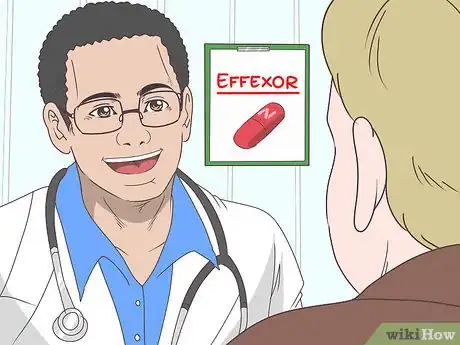


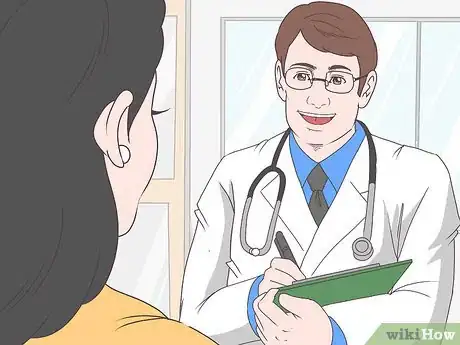


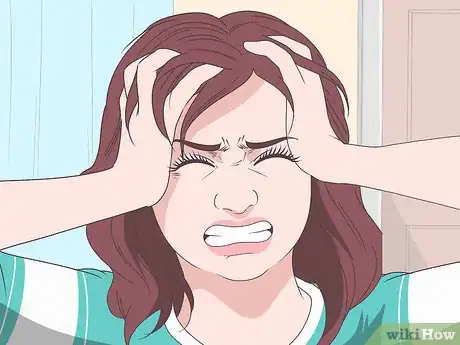
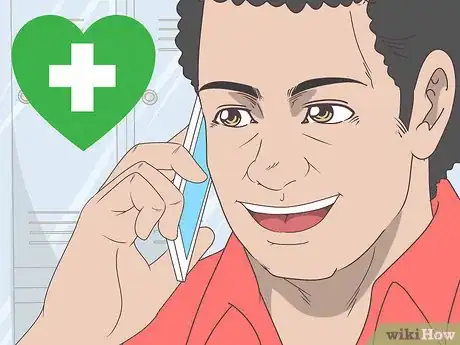
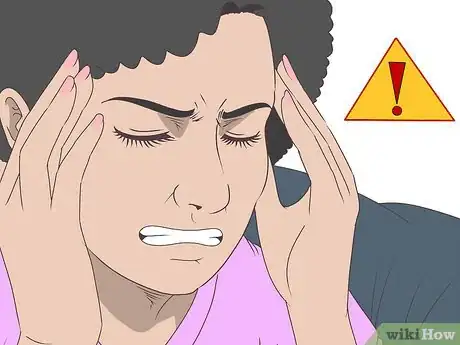
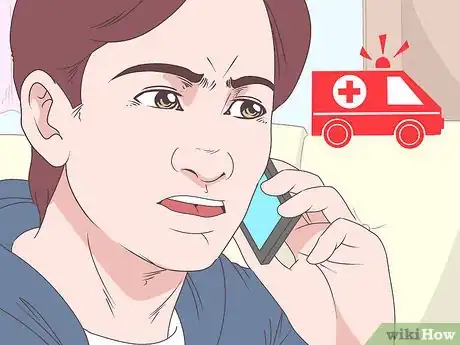
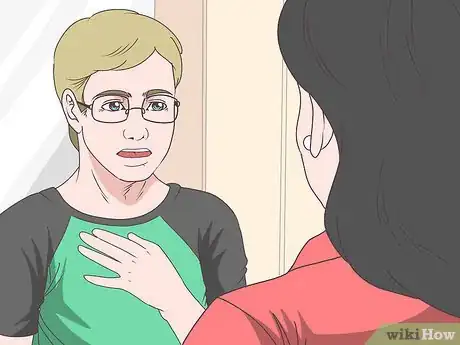
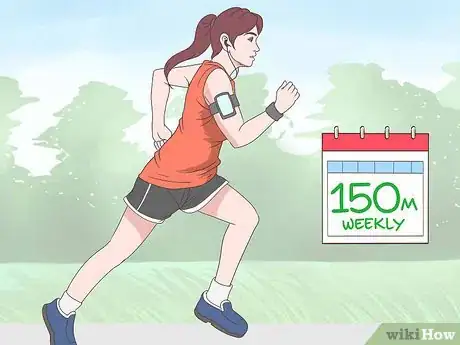


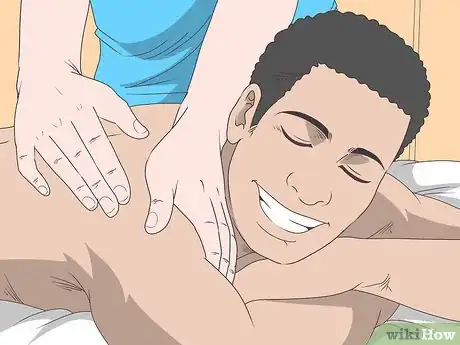
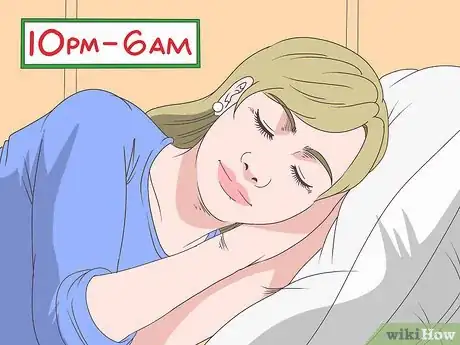
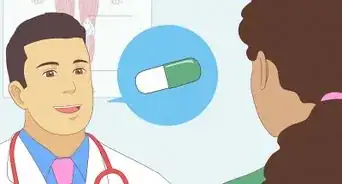
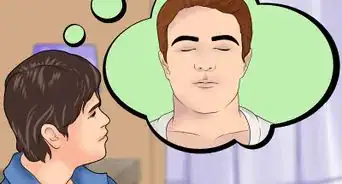
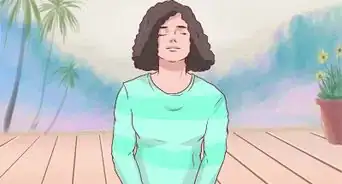

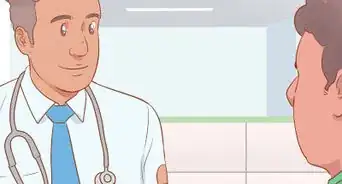
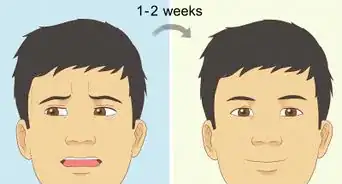
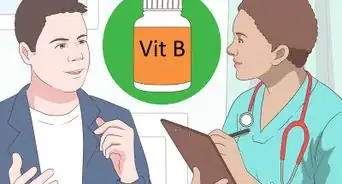
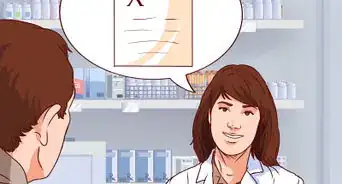

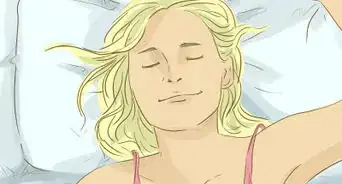

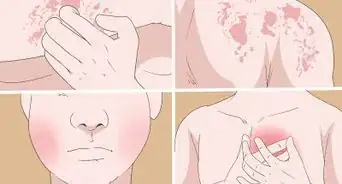
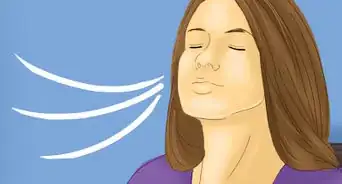
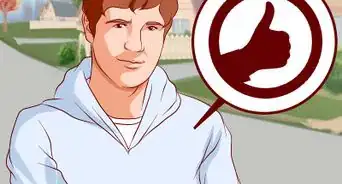









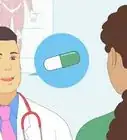
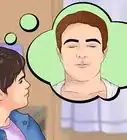





































Medical Disclaimer
The content of this article is not intended to be a substitute for professional medical advice, examination, diagnosis, or treatment. You should always contact your doctor or other qualified healthcare professional before starting, changing, or stopping any kind of health treatment.
Read More...